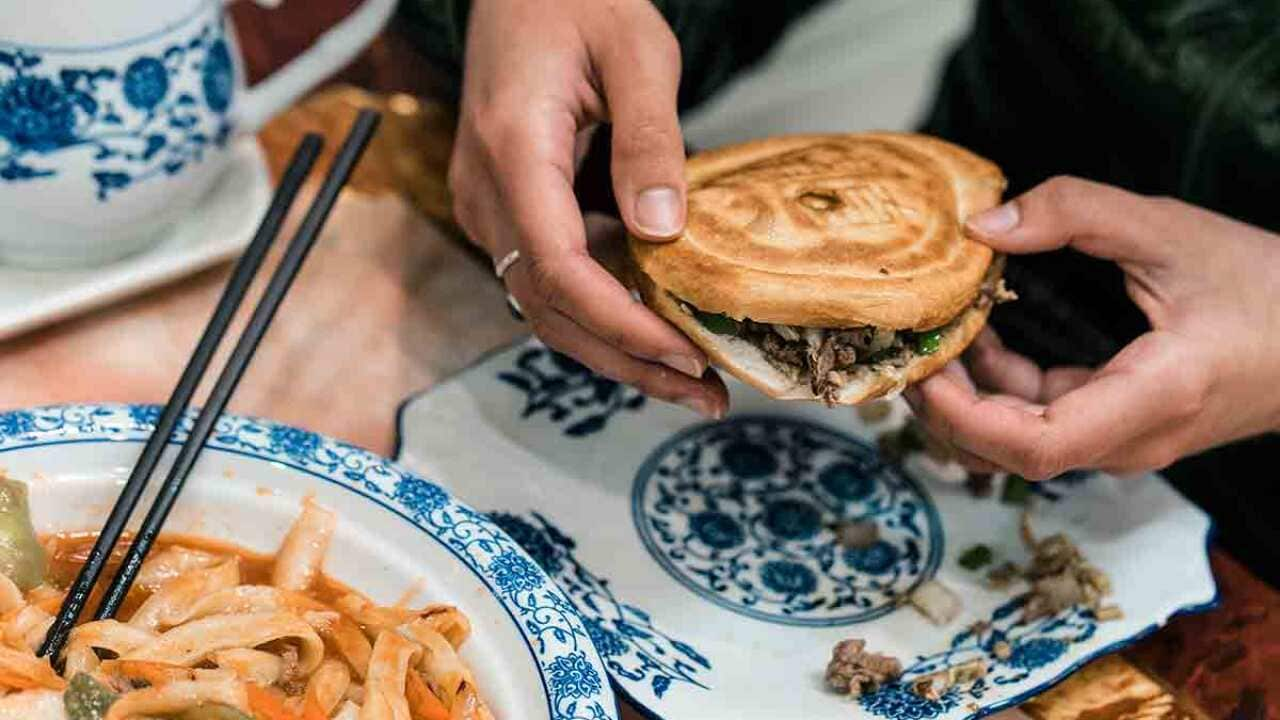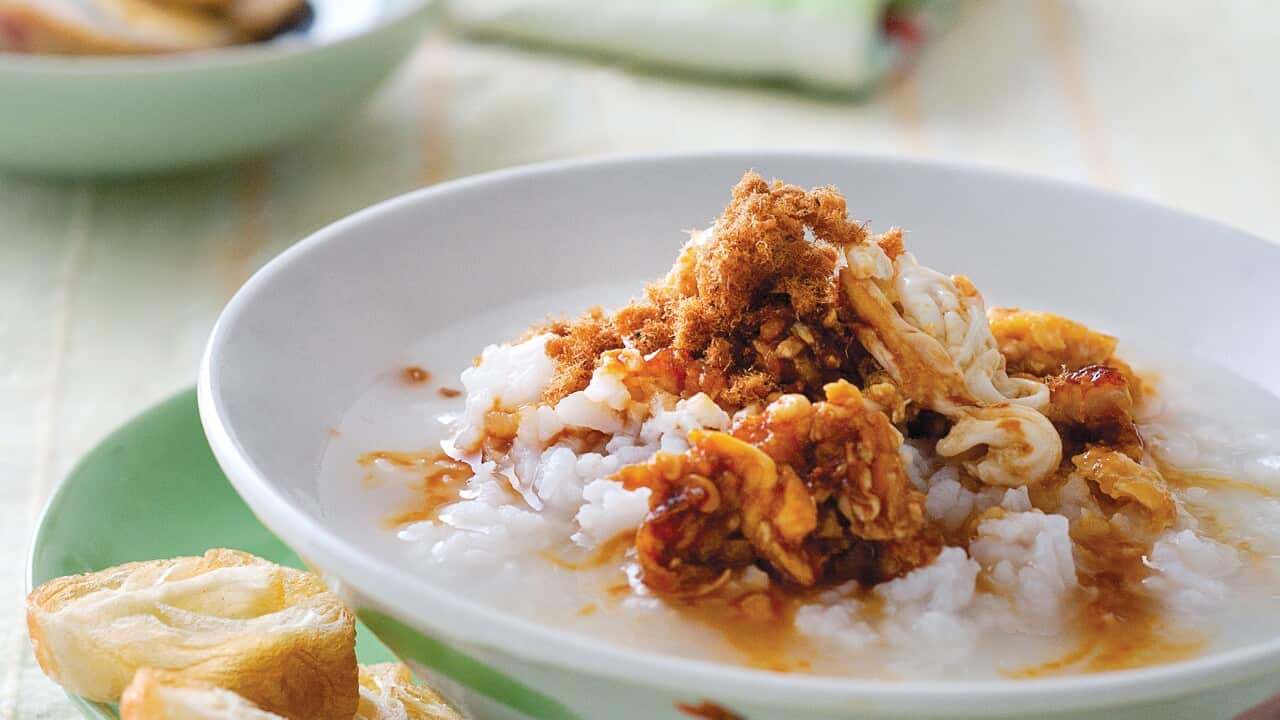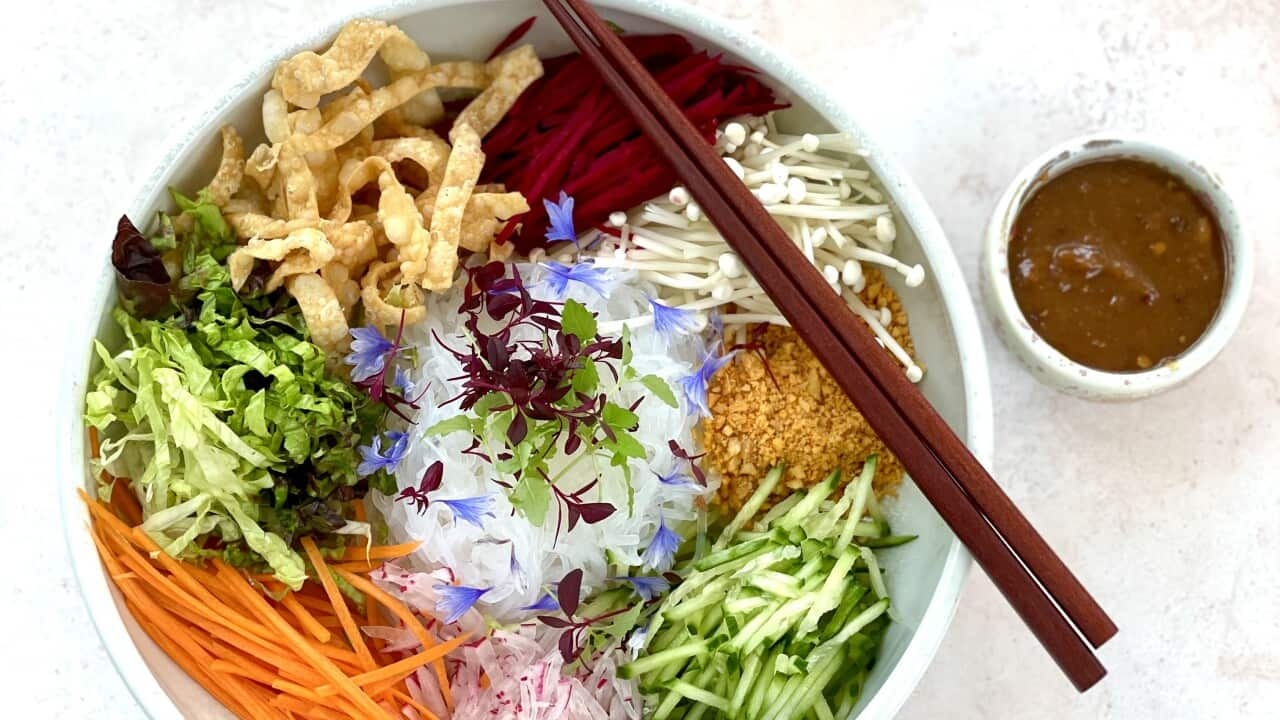--- Watch The Streets, Hong Kong on SBS Food (Ch. 33) Mondays, 7:30pm. Stream all episodes anytime at SBS On Demand. For recipes and more head to the episode guide. ---
Chinese bakeries can be found across Australia. The self-service bakery where you can walk up with a tray and tongs and ultimately snap up your favourite bread, bun or sweet tartlette is a fun, satisfying and deeply gratifying place for someone who cannot resist eating carbs for breakfast, lunch and dinner.
Luckily for us Aussies, Chinese bakeries found in many Asian neighbourhoods, such as Box Hill in Melbourne and Hurstville in Sydney, offer near-authentic bakes — like those you would find in Taiwan, China and Hong Kong.
Pillowy-soft bread rolls are the cornerstone of Chinese bakeries. These rolls come in all sorts of delicious varieties, like pork buns glistening with a sugar glaze, anpan — a red bean-filled soft dinner roll akin to a finger bun — or the much-loved pineapple bun, which does not contain any pineapple but instead mirrors the shape of this tropical fruit.

Pork floss can be used in all types of food. Source: Instagram/Luvsweettoshin
Pork floss is a type of dried pork that's slightly orange in colour. Its Chinese name is rousong, which loosely translates to 'meat fluff', as it's tossed over a gentle heat and ultimately fluffed up into what looks like cotton.
MORE ON CHINESE TRADITIONAL BREADS

Beyond pork floss buns: China’s traditional breads need your attention
Rousong is seen as a breakfast item that can be generously placed on top of soft and fluffy bread rolls. It is also a common sandwich filling. I remember my school lunches — a fried egg with rousong sandwiched between two slices of white bread. I hated this 'lunch special' my mum prepared for me. The floss was not easy to eat compared to Nutella or Vegemite as the rousong fell at my feet as I tried to slurp up runny egg yolk alongside it. My mum did not make my school lunches easy for me and I would often run home and tell my mum to stop with the rousong and just give me peanut butter. It never happened because, in my mum's eyes, peanut butter was not enough for a growing child and instead best served with noodles for a summer peanut noodle dish.
While I hated rousong growing up, it was somewhat of a remedy when I had the flu during one of those cold 1980s Melbourne winters. Mum added it to congee, a rice soup simmered over a low flame. The salty and slightly sweet fluff stirred into a steaming bowl of congee was rewarding and appetising. This nourishing food encouraged you, even if your stomach didn't want it.
The salty and slightly sweet fluff stirred into a steaming bowl of congee was rewarding and appetising.
Rousong is widely eaten in China, Taiwan and also Singapore. It's used as a topping over steamed tofu or hot plain rice when you do not want to slave over a hot stove. In Taiwan, it's topped over savoury soy milk — a breakfast item not many people can tolerate as the soy-milk curdles with vinegar, soy sauce and pork floss.
The love for rousong is so widespread in Asian communities that it is also found in many desserts. Traditional mooncakes during the Mid-Autumn Festival are filled with rousong and red-bean paste. In Taiwan, you can also find pork floss in sweet pancakes.
As much as I loathed it as a child, I find myself craving it when I'm in Europe where it's harder to find, thanks to the very limited Chinese grocers near me.
I can almost sense a cheeky smirk spreading across my mum's face when I ask her to bring me a vacuum-sealed bag of rousong during her yearly visits with my dad, but I'm OK with that.
Share
SBS Food is a 24/7 foodie channel for all Australians, with a focus on simple, authentic and everyday food inspiration from cultures everywhere. NSW stream only. Read more about SBS Food
Have a story or comment? Contact Us






